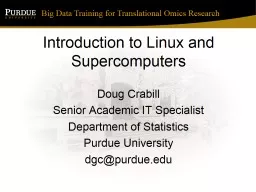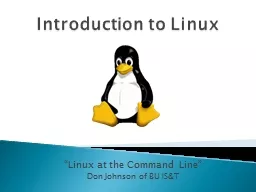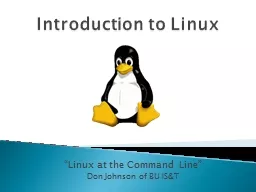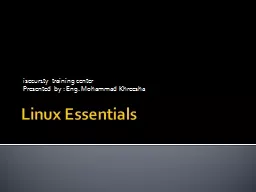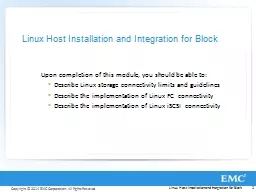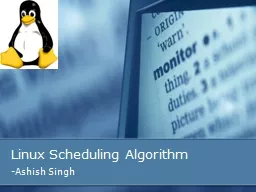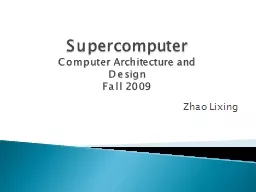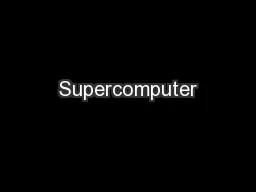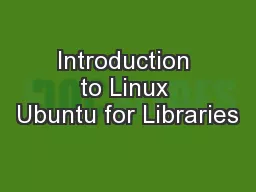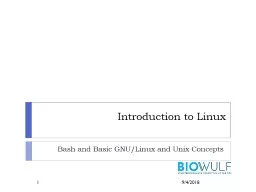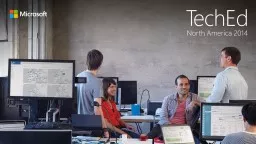PPT-Introduction to Linux and Supercomputers
Author : ellena-manuel | Published Date : 2018-11-04
Doug Crabill Senior Academic IT Specialist Department of Statistics Purdue University dgcpurdueedu What you will learn How to log into a Linux Supercomputer Basics
Presentation Embed Code
Download Presentation
Download Presentation The PPT/PDF document "Introduction to Linux and Supercomputers" is the property of its rightful owner. Permission is granted to download and print the materials on this website for personal, non-commercial use only, and to display it on your personal computer provided you do not modify the materials and that you retain all copyright notices contained in the materials. By downloading content from our website, you accept the terms of this agreement.
Introduction to Linux and Supercomputers: Transcript
Download Rules Of Document
"Introduction to Linux and Supercomputers"The content belongs to its owner. You may download and print it for personal use, without modification, and keep all copyright notices. By downloading, you agree to these terms.
Related Documents

